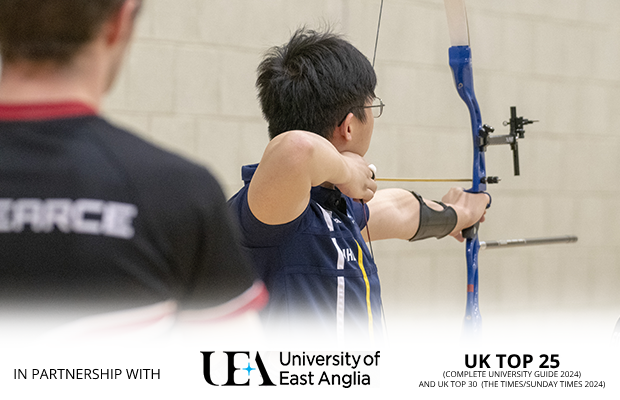This discussion is now closed.
Check out other Related discussions
- FM as an A-Level
- awful score on the mat?
- revise
- Resitting GCSE maths
- Do you have to do Further Maths to do Computer Science?
- Revising now at GCSE as yr 11
- IGCSE forum?
- alevel computerscience
- Dentistry Interview, A levels. I'm stuck
- A level physics without maths
- Is it better to follow your passion?
- Isaac Physics SPC Summer School
- A-level Mathematics Study Group 2023-2024
- 16+ Sixth form interviews 2022
- Learning A-Level Maths by Videos or Text?
- A level choices for imperial?
- I'm failing my a levels and don't know what to do
- can anyone help me with my personal statement for econ bsc?
- Failing A Level Maths
- need a level help!!!!! urgent
A bunch of ridiculously hard maths questions i'm stuck on
So basically i'm stuck on three questions. Would be very grateful if someone could help.
1.two cyclists set off around a 400m track at the same time in the same direction. one is cycling at 5m/s and the other at 3m/s. how long will it take for the faster cyclist to have caught up with the slower one and is just about to overtake him?
2.two cyclists set off around a 400m track at the same time in opposite directions. one is travelling at 5m/s and the other is travelling at 3m/s. how far round the track will they first cross? where will they cross the second time?
3.two cyclists set off around a 400m track at the same time in opposite directions. when the faster cyclist has completed three full circuits the slower one has only completed two full circuits. where did they first cross. where did they first cross if they completed the circuit 5 and 3 times respectively.
1.two cyclists set off around a 400m track at the same time in the same direction. one is cycling at 5m/s and the other at 3m/s. how long will it take for the faster cyclist to have caught up with the slower one and is just about to overtake him?
2.two cyclists set off around a 400m track at the same time in opposite directions. one is travelling at 5m/s and the other is travelling at 3m/s. how far round the track will they first cross? where will they cross the second time?
3.two cyclists set off around a 400m track at the same time in opposite directions. when the faster cyclist has completed three full circuits the slower one has only completed two full circuits. where did they first cross. where did they first cross if they completed the circuit 5 and 3 times respectively.
managed to answer the first one. got 200 seconds as my answer. any help on the other two/
1. 5m/s take 80s to get round. After two laps he has taken 160s, meaning the other dude is 480m done so 80 ahead. This means the 5m/s has to gain 80m, and at 2 per seconds, this is another 40. Hence 200 seconds.
2. part one: 400 in a ratio of 3:5. So they'll meet at 250m round after 50s. Then this will happens again, so they'll meet at the 100m mark after 100s. (Imagine the 250m point is the new start)
3. Cyclist is faster in speed at a ratio of 3:2, so they'll meet at the point where cyclist one has covered 3/5 (240m). Same process for the second question. 3:5 so at the point where cyclist one has covered 5/8. Hence 250m round.
I think!
2. part one: 400 in a ratio of 3:5. So they'll meet at 250m round after 50s. Then this will happens again, so they'll meet at the 100m mark after 100s. (Imagine the 250m point is the new start)
3. Cyclist is faster in speed at a ratio of 3:2, so they'll meet at the point where cyclist one has covered 3/5 (240m). Same process for the second question. 3:5 so at the point where cyclist one has covered 5/8. Hence 250m round.
I think!
1. The gap is increasing at 2 m/s, when the gap gets to 400m something special happens
2.Okay, if we say one of them starts at 400 and one starts at 0 it is easier.
the cyclist who starts at 400 is moving at - 5 m/s
the cyclist who starts at 0 is moving at 3 m/s
so let t be a variable in seconds and solve
400 - 5t = 3t
let the constant = 800 to represent 2 times round the track, not the most elegant solution but it works.
3. cba doing more typing, see if you can figure it out based on the answers for the first two. Ill probably reply tommorow if you are stuck.
edit: good, someone else is online who can't get to sleep but hasn't got a dead brain from too much celebrating lol
2.Okay, if we say one of them starts at 400 and one starts at 0 it is easier.
the cyclist who starts at 400 is moving at - 5 m/s
the cyclist who starts at 0 is moving at 3 m/s
so let t be a variable in seconds and solve
400 - 5t = 3t
let the constant = 800 to represent 2 times round the track, not the most elegant solution but it works.
3. cba doing more typing, see if you can figure it out based on the answers for the first two. Ill probably reply tommorow if you are stuck.
edit: good, someone else is online who can't get to sleep but hasn't got a dead brain from too much celebrating lol
got the answer to the second question. in the direction of the 3 m/s cyclist they should meet at 150 m the first time and then 300m the second time
1. 5m/s take 80s to get round. After two laps he has taken 160s, meaning the other dude is 480m done so 80 ahead. This means the 5m/s has to gain 80m, and at 2 per seconds, this is another 40. Hence 200 seconds.
2. part one: 400 in a ratio of 3:5. So they'll meet at 250m round after 50s. Then this will happens again, so they'll meet at the 100m mark after 100s. (Imagine the 250m point is the new start)
3. Cyclist is faster in speed at a ratio of 3:2, so they'll meet at the point where cyclist one has covered 3/5 (240m). Same process for the second question. 3:5 so at the point where cyclist one has covered 5/8. Hence 250m round.
The dude who worked all of this out is AWESOME!!!
Skylark320
1. 5m/s take 80s to get round. After two laps he has taken 160s, meaning the other dude is 480m done so 80 ahead. This means the 5m/s has to gain 80m, and at 2 per seconds, this is another 40. Hence 200 seconds.
You made itover complicated.
Think of it this way, since the 5 m/s runner is faster by 2m/s, and needs to cross over 400m to lap him, just divide 400 by 2, hence 200 seconds.
[QUOTE]
DPLSK, isn't 3b the same idea as 3a, they're still travelling in the opposite direction so 3s + 5s = 400?
DPLSK
Skylark320 & I get the exact same answers except for part 3b) - where our answers differ. However, I've included all assumptions that I've made. It's not a particularly elegant solution though.
DPLSK, isn't 3b the same idea as 3a, they're still travelling in the opposite direction so 3s + 5s = 400?
Skylark320
DPLSK, isn't 3b the same idea as 3a, they're still travelling in the opposite direction so 3s + 5s = 400?
Not quite. 3s + 5s = 400 - I agree. However, both A & B have travelled for 5 laps and 3 laps respectively.
This changes things, as you must consider the new point of intersection after they have covered these laps.
My calculations should explain how I've done this. It's not the best method by any means though.
Related discussions
- FM as an A-Level
- awful score on the mat?
- revise
- Resitting GCSE maths
- Do you have to do Further Maths to do Computer Science?
- Revising now at GCSE as yr 11
- IGCSE forum?
- alevel computerscience
- Dentistry Interview, A levels. I'm stuck
- A level physics without maths
- Is it better to follow your passion?
- Isaac Physics SPC Summer School
- A-level Mathematics Study Group 2023-2024
- 16+ Sixth form interviews 2022
- Learning A-Level Maths by Videos or Text?
- A level choices for imperial?
- I'm failing my a levels and don't know what to do
- can anyone help me with my personal statement for econ bsc?
- Failing A Level Maths
- need a level help!!!!! urgent
Latest
Trending
Last reply 3 days ago
Did Cambridge maths students find maths and further maths a level very easy?Last reply 2 weeks ago
Edexcel A Level Mathematics Paper 2 unofficial mark scheme correct me if wrongMaths
71
Trending
Last reply 3 days ago
Did Cambridge maths students find maths and further maths a level very easy?Last reply 2 weeks ago
Edexcel A Level Mathematics Paper 2 unofficial mark scheme correct me if wrongMaths
71




